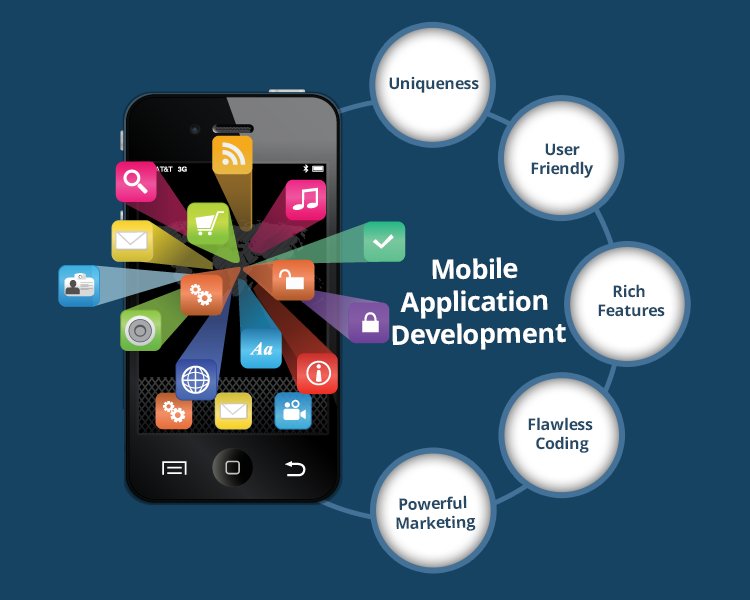Developing Mobile Apps for Android and iOS: A Comprehensive Guide

Mobile app development has become a crucial aspect of business growth in today's digital era. With the increasing demand for smartphones and mobile applications, it is essential for businesses to have a presence on both Android and iOS platforms. Developing mobile apps for these two dominant operating systems requires meticulous planning, coding expertise, and a thorough understanding of the target audience.
In this comprehensive guide, we will delve into the intricacies of developing mobile apps for Android and iOS. Whether you are a beginner or an experienced developer, this article will provide you with valuable insights and tips to create high-quality, user-friendly applications that cater to the needs and preferences of your target users.
1. Understanding the Differences between Android and iOS
Before diving into the development process, it is crucial to comprehend the fundamental differences between Android and iOS platforms. This section will explore the key variations in terms of market share, user demographics, design guidelines, and development languages.
2. Defining the App Requirements and Objectives
Prior to starting any development project, it is essential to clearly define the app requirements and objectives. This section will guide you through the process of conducting market research, identifying target users, outlining features and functionalities, and setting realistic goals for your mobile app.
3. Planning and Wireframing the User Interface
A well-designed and intuitive user interface is crucial for the success of any mobile app. This section will introduce you to the importance of wireframing and planning the user interface. You will learn about the best practices for creating user-friendly layouts, navigation structures, and visual elements that align with the platform-specific design guidelines.
4. Choosing the Right Development Approach
When it comes to developing mobile apps, there are multiple approaches to consider, such as native, hybrid, and cross-platform development. This section will help you understand the pros and cons of each approach, enabling you to make an informed decision based on your project requirements, budget, and time constraints.
5. Setting Up the Development Environment
Before you can start coding your mobile app, it is essential to set up the development environment. This section will guide you through the installation and configuration of the necessary tools and frameworks, such as Android Studio for Android development and Xcode for iOS development.
6. Implementing Core Functionality and Features
Implementing the core functionality and features of your mobile app is a critical step in the development process. This section will cover topics such as handling user input, integrating APIs, utilizing device sensors, and implementing data storage mechanisms to create a robust and interactive application.
7. Testing and Debugging Your Mobile App
Thorough testing and debugging are vital to ensure the quality and stability of your mobile app. This section will introduce you to various testing techniques and tools, such as unit testing, automated testing, and beta testing, to identify and fix any issues or bugs before releasing the app to the market.
8. Optimizing Performance and User Experience
To provide a seamless and engaging experience to your users, it is crucial to optimize the performance and user experience of your mobile app. This section will discuss strategies for improving app loading times, minimizing battery consumption, optimizing memory usage, and enhancing overall responsiveness.
9. Publishing Your App to the App Stores
Once your mobile app is fully developed, tested, and optimized, it's time to publish it to the respective app stores. This section will guide you through the process of creating developer accounts, preparing the necessary assets and information, and submitting your app for review to ensure a successful release.
10. Post-Launch Marketing and Maintenance
Launching your app is just the beginning of your mobile app journey. This section will explore effective marketing strategies to promote your app, gather user feedback, and continuously improve and maintain your application to meet the evolving needs and expectations of your users.
In conclusion, developing mobile apps for Android and iOS requires careful planning, thorough knowledge of platform-specific guidelines, and a user-centric approach. By following the comprehensive guide provided in this article, you will be well-equipped to create high-quality, innovative, and successful mobile applications that resonate with your target audience.

Post a Comment for "Developing Mobile Apps for Android and iOS: A Comprehensive Guide"
Terimakasih Telah Berkunjung Di Blog Ini, Jika Merasa Artikel Bermanfaat Jangan Lupa Untuk DiShare.
Atas Kerjasamanya Admin Mengucapkan Terimakasih.
----Katingo Take----